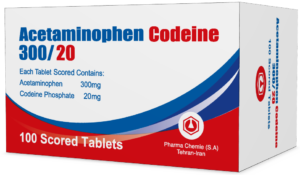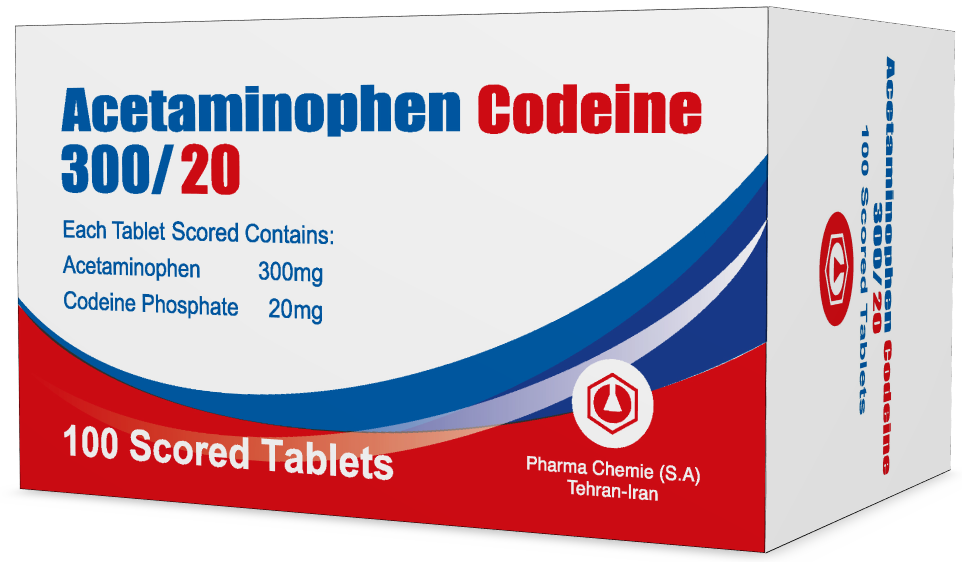Pain management is a crucial aspect of healthcare, aiming to improve the quality of life for those suffering from acute or chronic conditions. Among the myriad of options available, acetaminophen codeine or acetaminophen-codeine stands out as a widely recognized and utilized combination for pain relief. This article delves into the significance of acetaminophen codeine, offering a thorough understanding of its benefits, usage guidelines, potential side effects, and safety precautions. By exploring this combination, readers will gain valuable insights into how acetaminophen codeine can be used effectively and safely for pain management.
Understanding acetaminophen codeine is vital for patients and healthcare providers alike to ensure its benefits are maximized while minimizing risks. As we navigate through the specifics of this medication, it’s important to remain informed about the appropriate contexts for its use, the precautions that should be taken, and the potential for dependency and interaction with other medications. People are more equipped to make decisions about their pain and health thanks to this knowledge.
What is Acetaminophen Codeine?
Acetaminophen codeine is a combination medication used for the relief of moderate to severe pain. To understand this combination, it’s essential to look at its components individually and then see how they work together to combat pain.
Acetaminophen (Tylenol)

Acetaminophen is a commonly used antipyretic (fever reducer) and analgesic (pain reliever). It works by inhibiting the production of prostaglandins in the brain, chemicals that promote pain and fever. This component is effective for treating headaches, muscle aches, arthritis, backaches, toothaches, colds, and fevers.
Codeine

Contrarily, codeine is an opioid analgesic. It modifies the nerve system’s and brain’s reaction to pain. By binding to opioid receptors in the brain, codeine increases tolerance to discomfort, thereby decreasing the perception of pain.
The Combination for Pain Relief
When combined, acetaminophen codeine offers a dual approach to pain management. Acetaminophen targets the pain from a non-opioid angle, reducing fever and alleviating pain through its action on prostaglandins. Codeine adds to the effectiveness by directly affecting the central nervous system, further reducing the sensation of pain.
The Benefits of Acetaminophen Codeine
The combination of acetaminophen codeine offers a multifaceted approach to pain management, making it a preferred option for individuals dealing with moderate to severe pain. Here are the key benefits:
Analgesic Effects
Pain Relief: The primary advantage of acetaminophen codeine is its potent analgesic effect. It effectively manages a range of pain conditions from the mild discomfort of headaches to the more intense pain of surgeries.
Antipyretic Effects
Fever Reduction: Acetaminophen, a component of acetaminophen codeine, plays a crucial role in reducing fever, making it beneficial for symptoms accompanying a cold or flu.
Convenience and Effectiveness
- Versatility: This combination is useful in various scenarios, from post-operative pain to dental procedures, providing a versatile pain management tool.
- Ease of Use: Available in various forms, including tablets and liquids, acetaminophen codeine offers ease of administration tailored to patient needs.
How to Use Acetaminophen Codeine Safely
Recommended Dosages
- Adults: The typical dosage for adults varies, but it often ranges from 300 mg of acetaminophen and 15 mg of codeine, taken every 4 to 6 hours as needed for pain. However, dosages may differ based on specific health conditions and individual needs.
- Children: Use in children requires careful consideration and should be based on the child’s weight and age. It’s imperative to follow a healthcare professional’s guidance strictly.
Understanding Prescription Instructions
- Always follow the prescription label or consult your doctor for the correct dosage.
- Steer clear of alcohol as it can make you more sleepy and lightheaded.
Importance of Healthcare Professional Advice
- Monitoring: Regular check-ups are crucial for monitoring side effects or potential dependency.
- Adjustments: Dosages may need adjustments based on effectiveness and tolerance.
Side Effects and Precautions
Common Side Effects
- Drowsiness, dizziness, nausea, vomiting, and constipation are common. Drinking water, eating dietary fiber, and exercising can help alleviate some of these symptoms.
Serious Side Effects and Symptoms of Overdose
- Breathing difficulties, extreme drowsiness, and skin reactions are severe side effects. Symptoms of an overdose include confusion, weak pulse, and loss of consciousness.
Precautions to Minimize Risk
- Storage: Keep in a secure location out of reach of children and pets.
- History of Substance Misuse: Individuals with a history should consult healthcare providers for alternatives.
Considering these guidelines will help ensure the safe and effective use of acetaminophen codeine. Always prioritize safety and consult healthcare professionals with any concerns or questions regarding its use.
Special Considerations for Use
When it comes to acetaminophen codeine, it’s not a one-size-fits-all medication. Certain groups of individuals need to approach its use with extra caution due to higher susceptibility to side effects or complications.
Age-specific Guidelines
- Children: The risk of serious side effects, such as shallow breathing, is higher among children. Dosing should be weight-appropriate and under a healthcare provider’s supervision.
- Elderly: Older adults may be more sensitive to side effects, particularly dizziness, drowsiness, and constipation. Lower dosages may be necessary.
Considerations for Pregnant and Breastfeeding Women
- Pregnancy: Use during pregnancy should be if the benefits outweigh the risks, as it can affect the fetus.
- Breastfeeding: Small amounts of codeine and acetaminophen pass into breast milk, so consult a healthcare provider for advice.
Individuals with a History of Substance Misuse
- Potential for Dependency: Given its codeine content, acetaminophen codeine poses a risk for dependency, especially in individuals with a history of substance misuse or addiction.
Understanding the Risks: Dependency and Overdose
The Potential for Dependency
Recognizing the signs of dependency, such as needing higher doses for relief or using the medication beyond its prescribed duration, is crucial.
Overdose Symptoms and Immediate Actions
Symptoms include difficulty breathing, extreme drowsiness, and confusion. Immediate action includes contacting emergency services and stopping usage.
Resources and Assistance for Individuals Facing Dependency Issues
- Support groups and rehabilitation programs are essential resources for individuals dealing with dependency on medications like acetaminophen codeine. Consulting healthcare providers can also guide access to appropriate treatment options.
Interactions with Other Medications
The interaction of acetaminophen codeine with other medications can lead to adverse effects or reduce its efficacy. Here are key considerations:
Common Drug Interactions and Their Implications
- CNS Depressants: Combining acetaminophen codeine with other central nervous system depressants, such as benzodiazepines or alcohol, can enhance sedative effects, increasing the risk of respiratory depression or severe drowsiness.
- MAO Inhibitors: Interaction with MAO inhibitors can lead to serious complications, including confusion and high blood pressure.
The Importance of Disclosing All Medications
To avoid harmful interactions, it’s vital to inform healthcare providers about all medications, supplements, and over-the-counter drugs being taken alongside acetaminophen codeine.
How to Avoid Harmful Interactions
A healthcare provider can offer guidance on safe medication practices, including adjusting dosages or substituting medications to mitigate interaction risks.
Proper Storage and Disposal of Acetaminophen Codeine
Tips for Safely Storing the Medication
Store acetaminophen codeine in its original container, in a cool and dry place, away from direct sunlight and moisture. This keeps it from degrading and helps keep it effective.
Guidelines for Disposing of Unused or Expired Medication Responsibly
Do not flush medications down the toilet or pour them into drains unless instructed to do so. Contact your local pharmacy or the municipal waste disposal department to learn about take-back programs and safe disposal methods.
Acetaminophen Codeine vs. Other Pain Relievers

When comparing acetaminophen codeine to other pain relievers, it’s essential to consider its unique benefits and potential risks. This medication offers effective pain management for moderate to severe pain, where non-opioid analgesics might not suffice. However, its opioid component necessitates careful consideration of dependency risks and side effects.In summary, acetaminophen codeine is a powerful tool.
for pain management, combining the effects of an opioid and a non-opioid pain reliever. Its effectiveness in treating moderate to severe pain, coupled with the ability to reduce fever, makes it a valuable option for many patients. However, its use must be carefully managed to minimize risks related to side effects, interactions with other medications, and the potential for dependency.
Why Acetaminophen Codeine May Be Preferred
- Efficacy: For certain types of pain, the combination provides superior relief compared to acetaminophen or codeine alone.
- Flexibility: It can be adjusted to fit a range of pain management needs, making it a versatile option for various conditions.
Considering Alternatives
While acetaminophen codeine is effective, it’s not suitable for everyone. Alternatives include non-opioid pain relievers, such as ibuprofen or naproxen, and non-pharmacological treatments, like physical therapy or acupuncture, depending on the pain’s cause and severity.
Making Informed Choices
Choosing the right pain management strategy requires a comprehensive understanding of the options available, including acetaminophen codeine. Patients should engage in open discussions with healthcare providers to weigh the benefits against potential risks, considering personal health history and specific pain management needs.
plays a critical role in the landscape of pain relief options, offering a potent solution for those who require more than what non-opioid analgesics can provide. However, its effectiveness comes with responsibilities for both healthcare providers and patients to ensure its use is both safe and appropriate.
Engaging with Healthcare Professionals

An essential step in using acetaminophen codeine responsibly is maintaining open communication with healthcare providers. This includes discussing all aspects of pain management, from the onset of pain to the various treatment options and their implications. Regular consultations can help monitor the effectiveness of the treatment and adjust dosages or strategies as needed.
Education and Awareness
Patients should be educated about the potential risks associated with acetaminophen codeine, including dependency and the dangers of overdose. Awareness of the signs of adverse reactions and understanding when and how to seek help are crucial components of safe use.
The Role of Support Systems
For those taking acetaminophen codeine, especially over longer periods, support systems play a vital role. This includes not only healthcare providers but also family, friends, and support groups that can offer additional guidance and assistance.
Conclusion
Acetaminophen codeine is a valuable tool in managing moderate to severe pain, combining the strengths of acetaminophen and codeine. Its benefits in pain relief and fever reduction must be balanced with an awareness of the risks, including potential side effects, interactions with other medications, and the risk of dependency. By following healthcare provider guidelines, patients can use acetaminophen codeine safely and effectively, making an informed choice in their pain management plan.
The journey of managing pain is a personal and complex one, with acetaminophen codeine serving as a significant aid for many. Its use, guided by care, consideration, and professional advice, underscores the importance of informed and responsible medication management in achieving a better quality of life amidst pain challenges.
READ ALSO:
- High Heart Rate When Sick: Causes, Management, and Prevention
-
5 Proven Strategies to Combat Broken Blood Vessels on Face: Essential Tips for Flawless Skin
-
Understanding Blurred Vision ICD 10 Code H53.8: Comprehensive Insight and Guidelines
-
L612 White Pill: Uses, Side Effects, Dosage, and Essential Benefits – Comprehensive Guide
